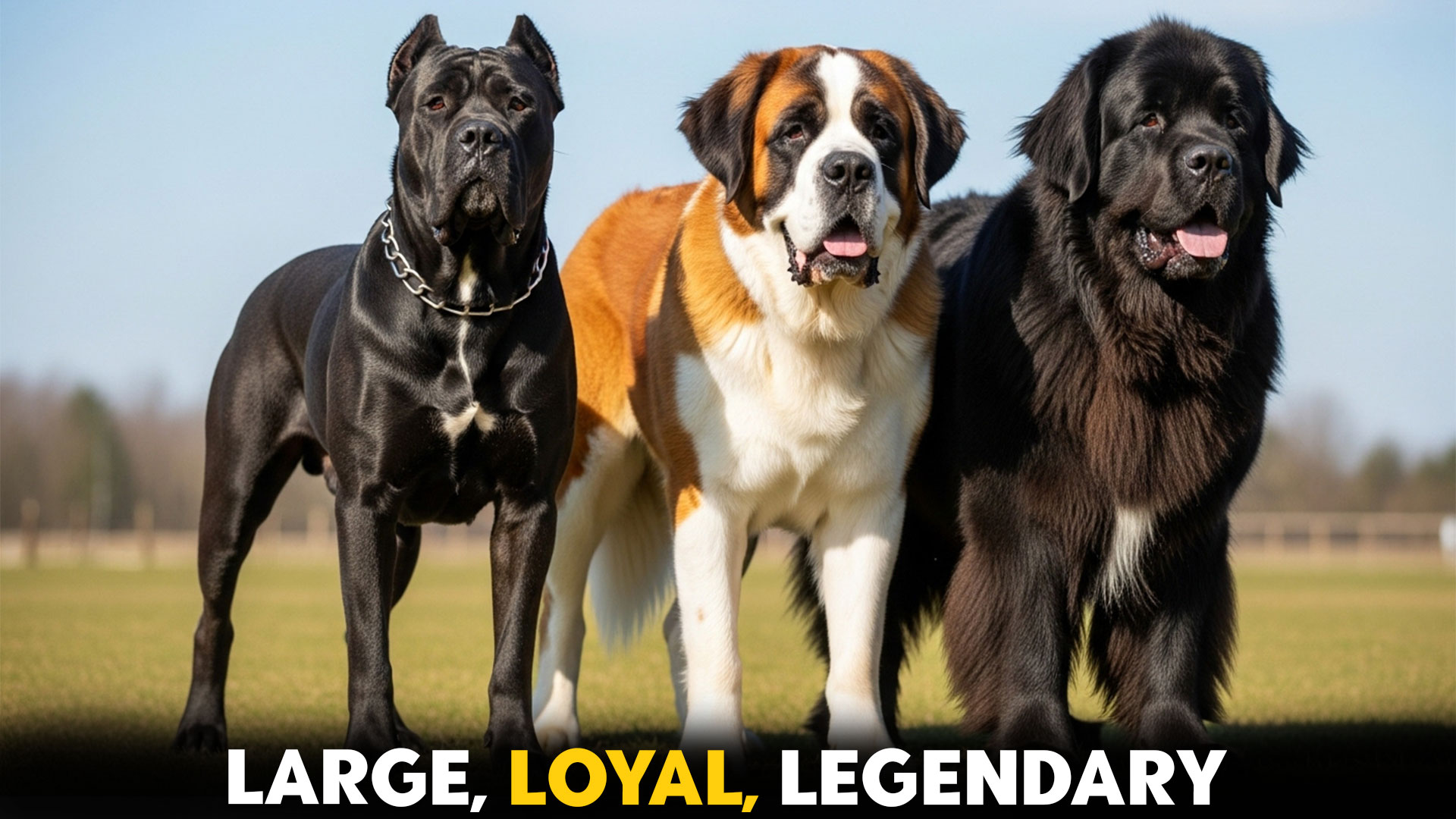These big dog breeds are some of the most awe-inspiring and lovable companions you can have. Known for their impressive size and gentle nature, these dogs often challenge the stereotype that big dogs are difficult to manage.
Many large dog breeds are known for their calm demeanor, loyalty, and affectionate nature. These biggest dog breeds are often gentle giants, making them ideal family pets for those who have the space and time to care for them.
Despite their size, many are surprisingly agile and active, thriving in homes where they can get regular exercise and attention.
Living with a giant dog comes with unique challenges, such as their need for proper training, socialization, and health care. However, the rewards of having such a loyal, loving companion are worth it.
Whether you’re considering adding a giant breed to your family or simply curious about these majestic animals, there’s a lot to love about these giant-hearted dogs. We have compiled a list of seven such giant breeds. Let’s go through them.
Largest Giant Dog Breeds You Should Get To Know
1. Saint Bernard
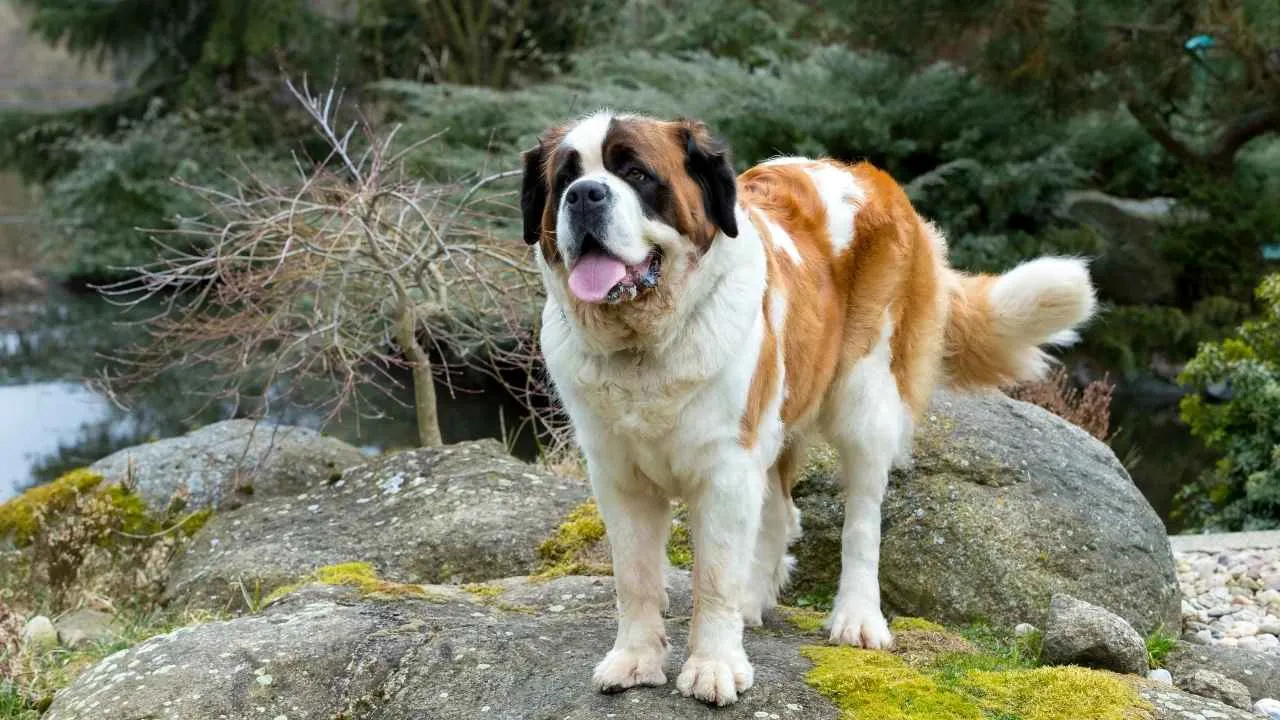
Personality & Size
Saint Bernards are massive and known for their calm, affectionate nature. They make excellent family pets. Despite their size, they are gentle and good-natured, though they require ample space and moderate daily exercise, like walks or swimming.
The Saint Bernards prefer cooler climates, as their thick coats make them vulnerable to heat.
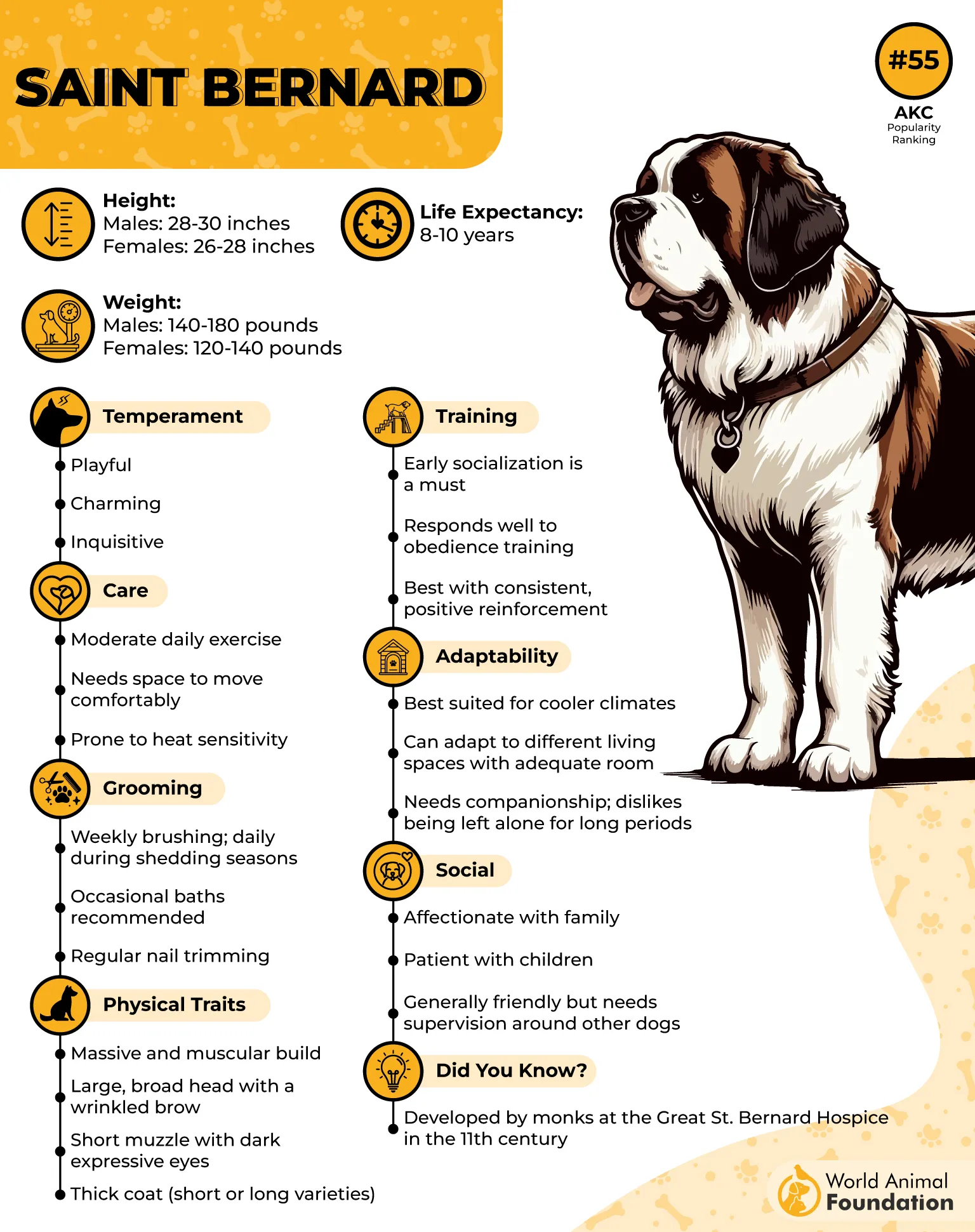
History & Origins
Originally bred by monks in the 1600s for rescue missions in the Swiss Alps, Saint Bernards were trained to locate avalanche victims. Their heroism saved hundreds of lives, as per PetMD.
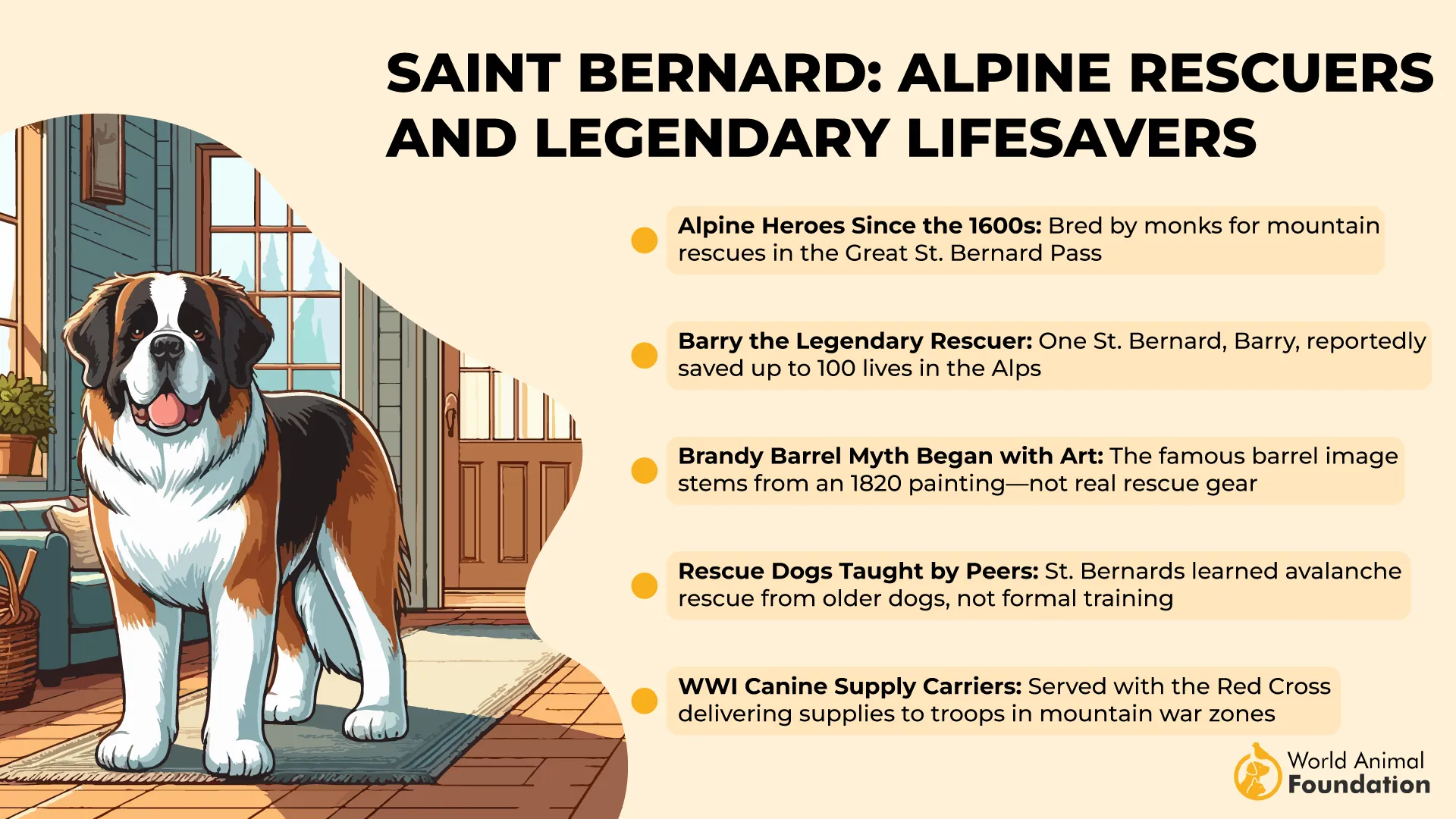
Named after Saint Bernard of Menthon, they were originally working dogs but are now beloved companions known for their loyalty and gentle temperament.
Grooming & Care
Brushing: Regular brushing (2-3 times a week) is essential to manage shedding and prevent matting.
Drooling: Expect excessive drooling, especially in warm weather; be prepared for frequent cleaning.
Ear & Eye Care: Regular checks are necessary to prevent infections in their large ears and eyes.
Nail Trimming: Trim nails regularly to avoid discomfort or injury.
Temperature: They thrive in cool environments; air conditioning is important in warmer climates to prevent overheating.
2. Cane Corso
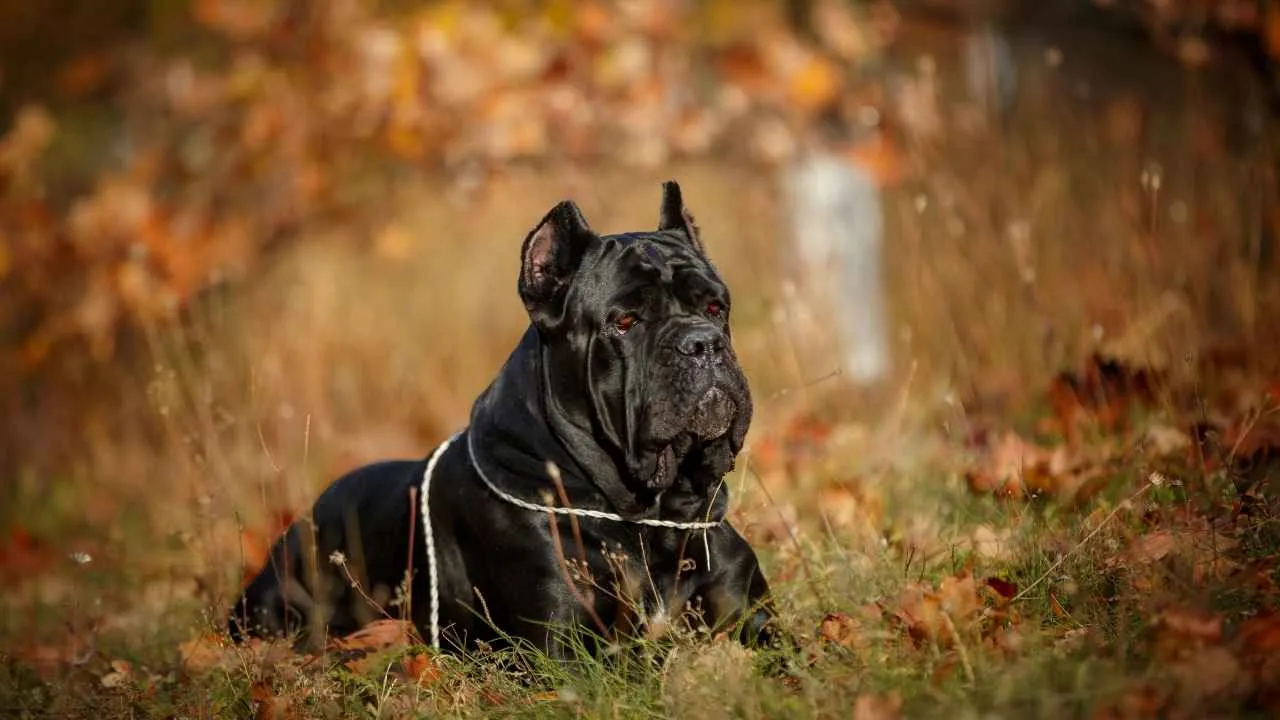
Temperament & Physical Traits
The Cane Corso is a powerful, muscular dog. Known for their protective nature, they are confident, intelligent, and devoted to their families. With proper training and socialization, they can be affectionate companions, though they tend to be cautious around strangers.
Early training is key to ensuring they are well-mannered and manageable, especially given their size.
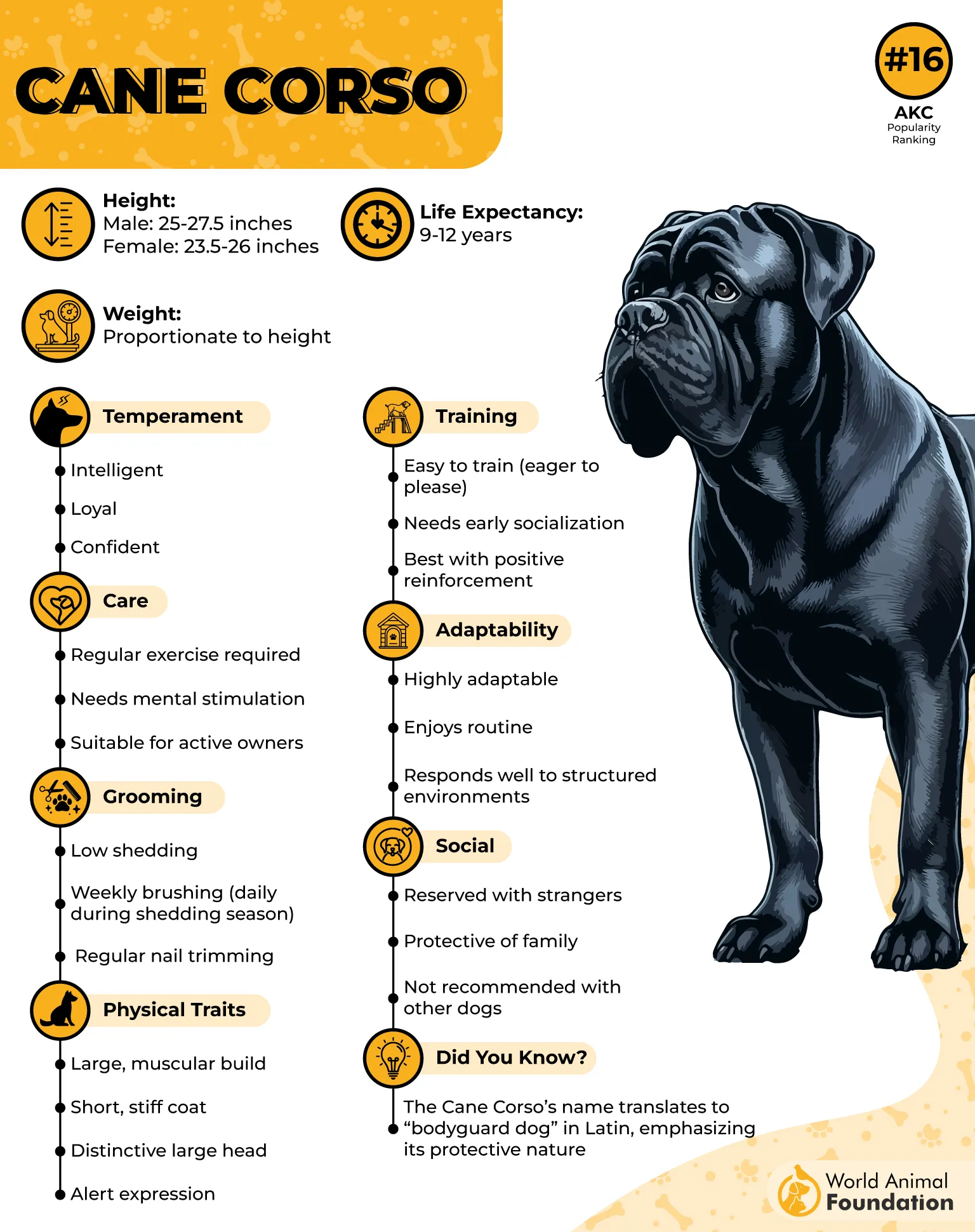
Origin & Heritage
Originating from Roman war dogs, the Cane Corso is a descendant of ancient Molossers, large dogs bred for guarding and protection. Brought to Italy by the Romans, they were used for hunting, livestock protection, and as fierce protectors.
Today, the majestic breed continues to embody the same strength and loyalty, making it prized for both work and companionship.
Grooming & Maintenance
Coat Care: Weekly brushing is sufficient; shedding increases in spring and fall.
Drool Management: Expect some drooling—keep a cloth handy for easy cleanup.
Basic Grooming: Low-maintenance coat that benefits from regular brushing to stay healthy.
Ear & Tail: Some Corsos have cropped ears and docked tails—ensure awareness of ethical considerations.
Training Requirements: Reward-based training is crucial for this strong-willed breed; best suited for experienced owners.
3. Newfoundland
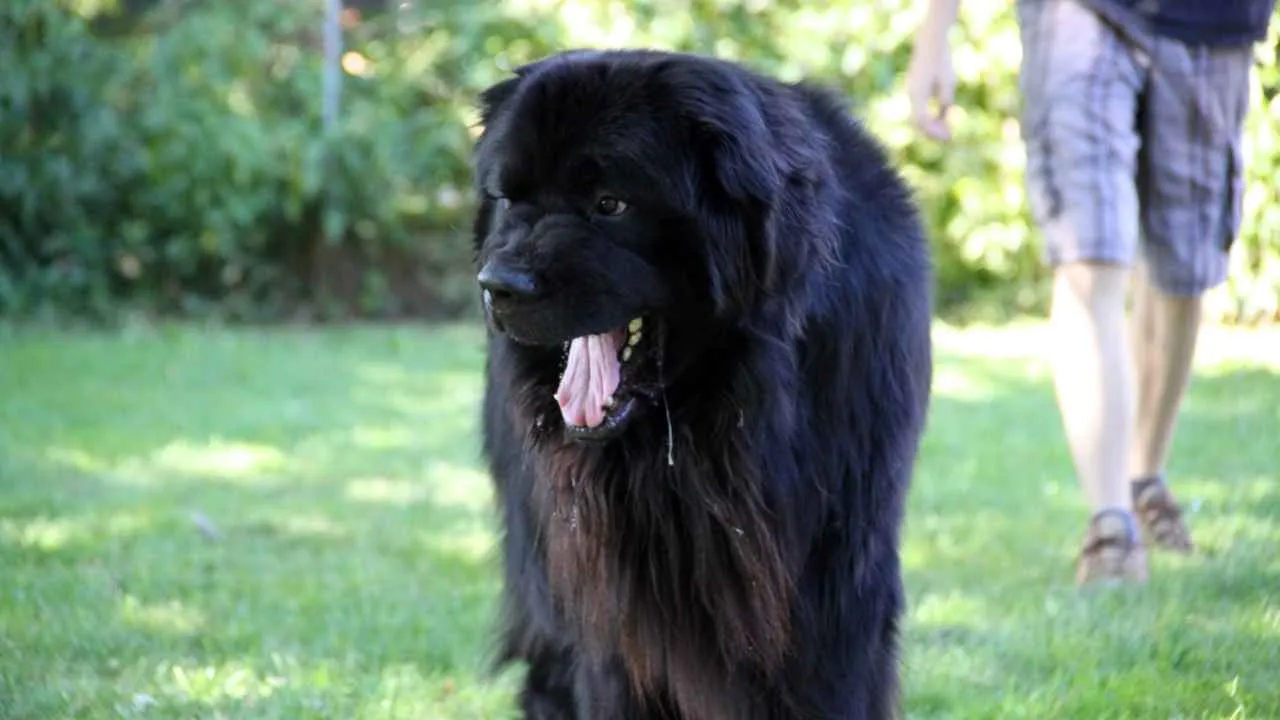
Temperament & Size
Newfoundlands, also known as Newfies, are one of the largest and most gentle dog breeds. They have a calm, friendly nature, making them excellent family companions. Despite their size, Newfies are particularly good with children, small pets, and other dogs.
Though not overly energetic, they require regular exercise, such as daily walks or a swim, to stay healthy and avoid obesity.
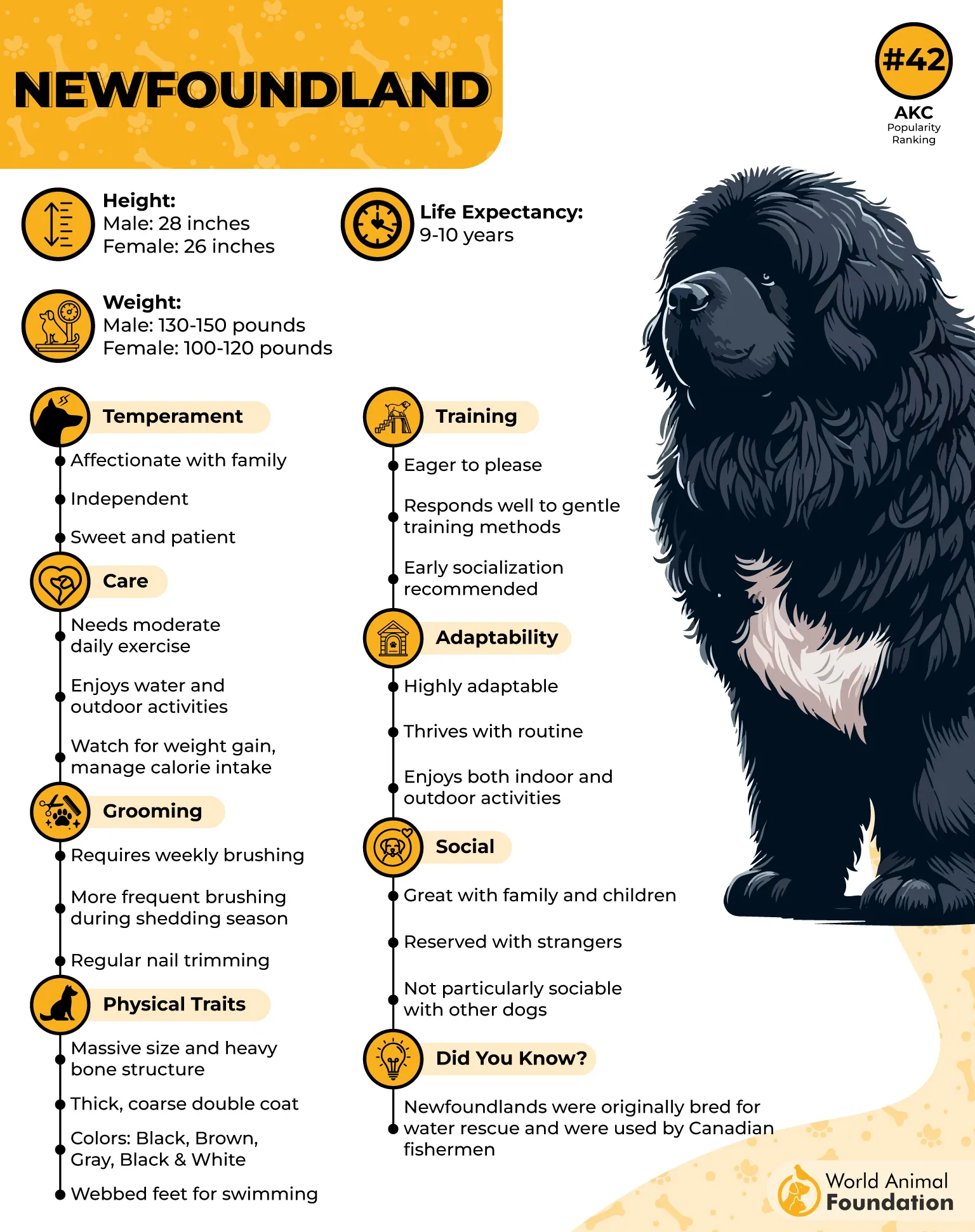
History & Origins
Originating from Newfoundland, Canada, these dogs were bred to work alongside fishermen, assisting in water rescues and hauling nets, as per Britannica. Their natural swimming ability and webbed paws made them superb in cold, icy waters.
Newfoundlands continue to be used in water rescue operations today, but they also shine as loving companions, known for their gentle and protective instincts.
Grooming & Care
Coat Care: Brush weekly, with daily grooming during seasonal shedding periods to manage heavy fur loss.
Drooling: Expect significant drooling, especially after meals or when excited—consider using a drool bib.
Exercise Needs: Moderate exercise is essential; daily walks and occasional swims keep them healthy.
Training: Positive reinforcement works best; start training early, as they grow quickly.
Socialization: Regular socialization from puppyhood ensures they remain confident and well-adjusted in various situations.
4. Doberman Pinscher
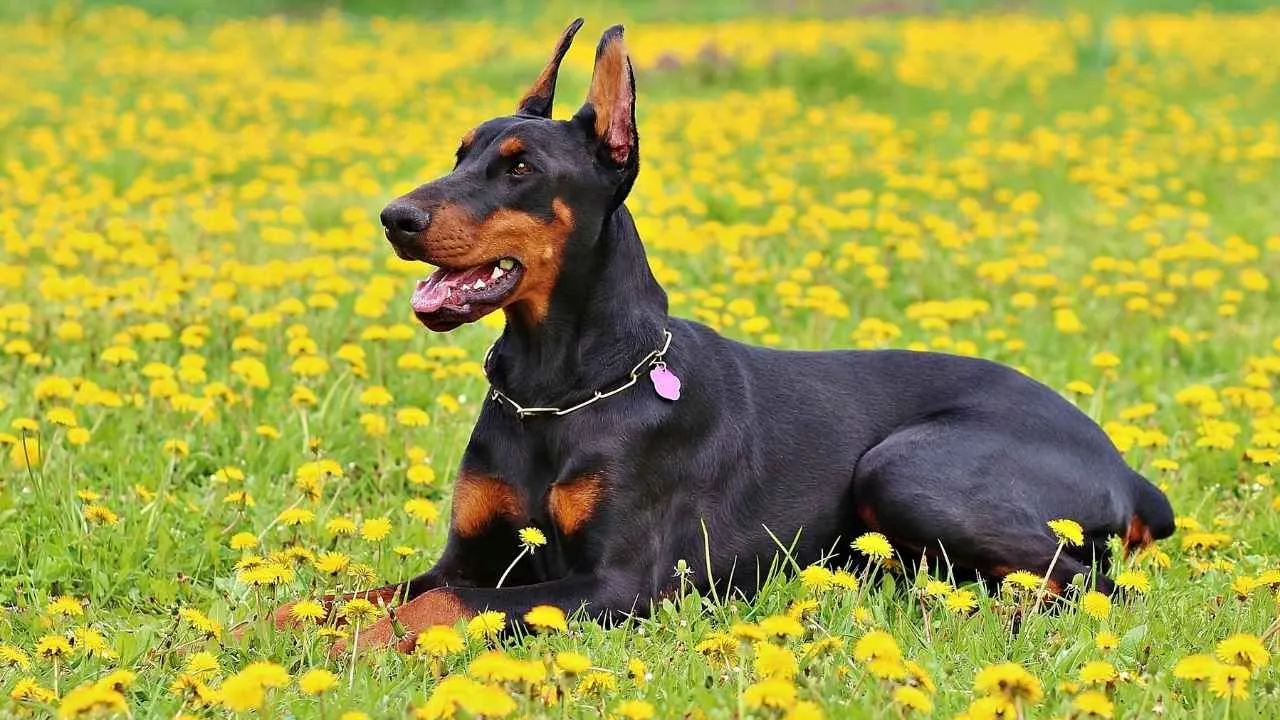
Temperament & Physical Traits
Doberman Pinschers are strong, energetic, and smart dogs. Known for their sleek, muscular build and confident demeanor, they are protective and loyal, making them excellent watchdogs and companions.
With proper training and early socialization, Dobies are affectionate and good with children and other pets.
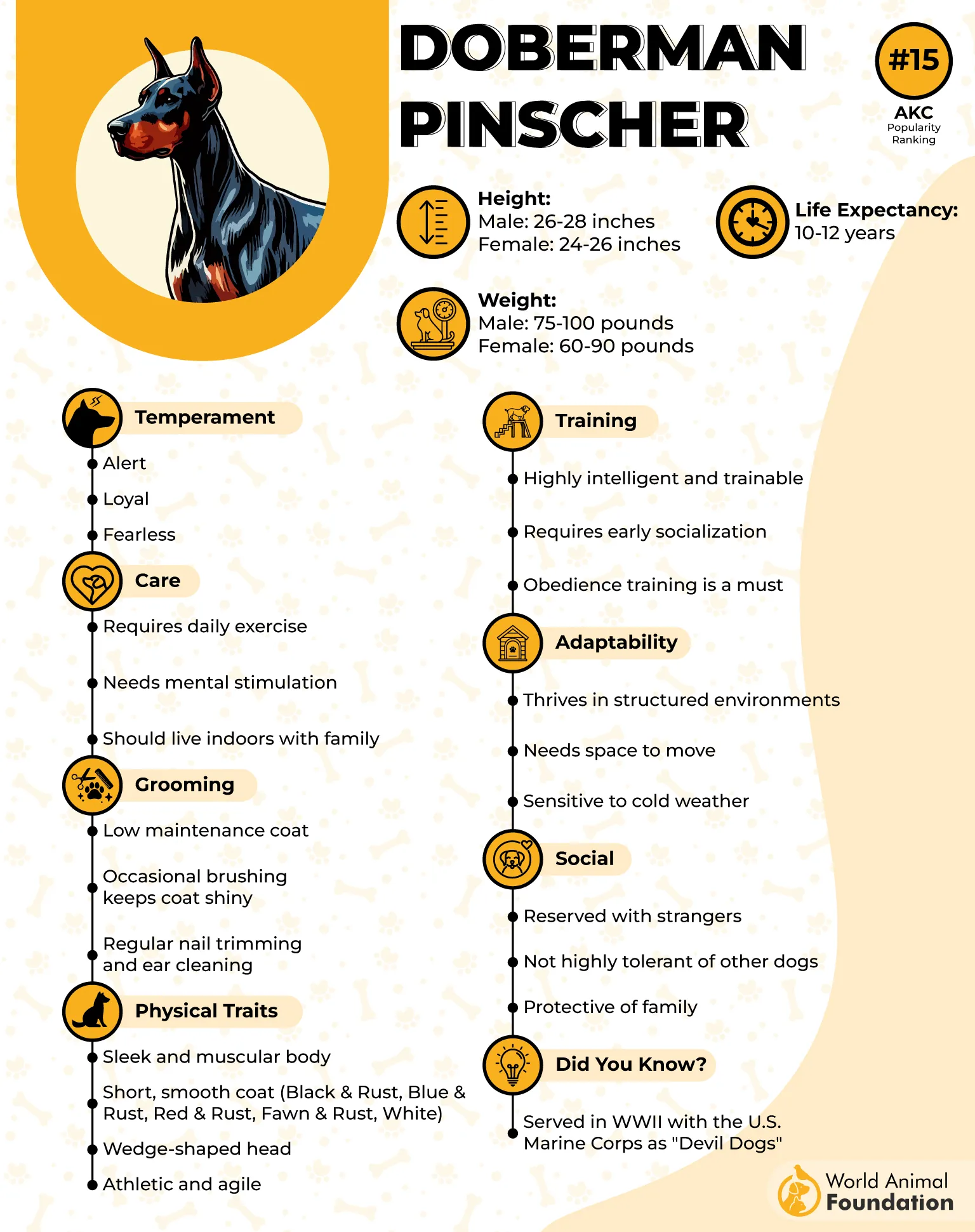
Origin & History
The Doberman Pinscher was developed in Germany in the late 19th century by Louis Dobermann, a tax collector who needed a protective dog for his rounds.
The biggest dog breed quickly gained a reputation as a top-tier working dog, excelling in roles like police K-9, military service, and therapy work. During World War II, U.S. Marine Corps Dobermans earned fame for their bravery, according to the AKC.
Grooming & Care
Coat Care: Their short coat is low-maintenance, requiring only occasional brushing to remove loose hairs.
Exercise Needs: High energy levels mean they need daily physical activity, such as long walks or runs.
Training: Highly intelligent but can get bored; use positive reinforcement and keep training sessions varied.
Socialization: Early and consistent socialization is essential to prevent overprotectiveness or aggression.
Health Considerations: Regular vet checkups are important to monitor for common issues like hip dysplasia or heart conditions.
5. Great Pyrenees
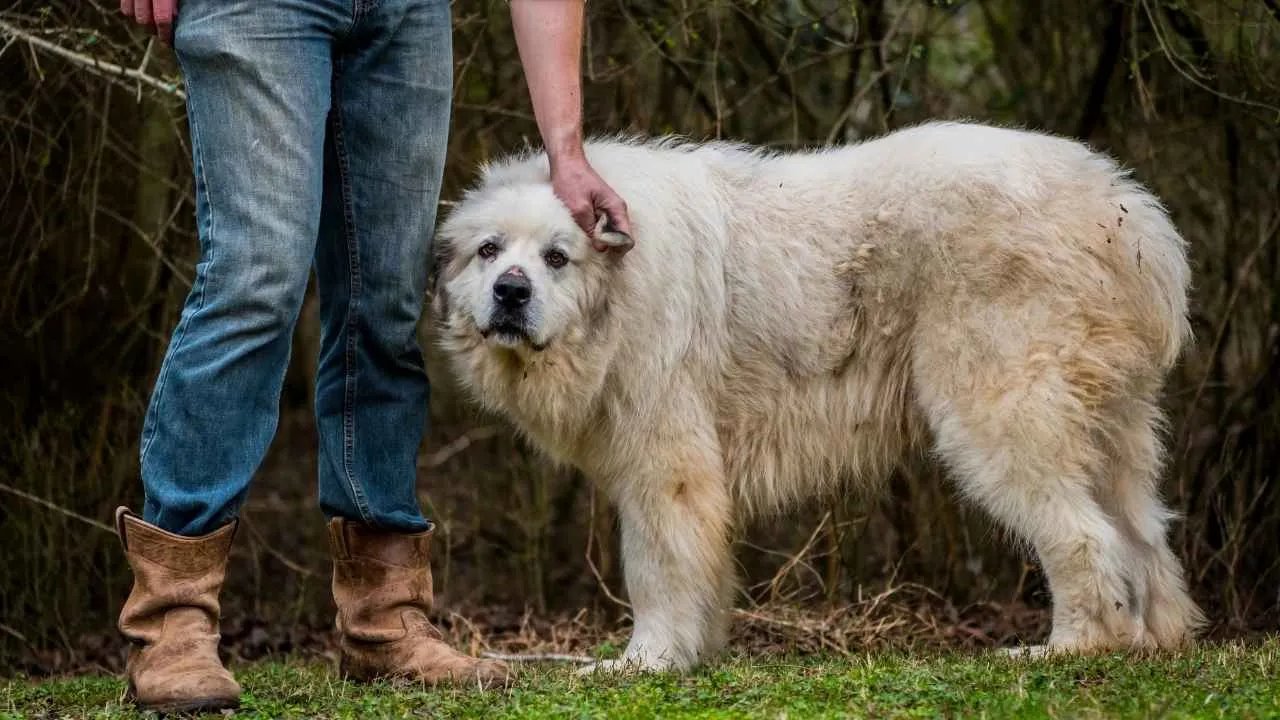
Temperament & Size
The Great Pyrenees is a large, calm, and protective dog. Known for their gentle nature, they are affectionate and trustworthy, especially with children. Although they are loving companions, their strong guarding instincts mean they may be extremely protective of their home and family life.
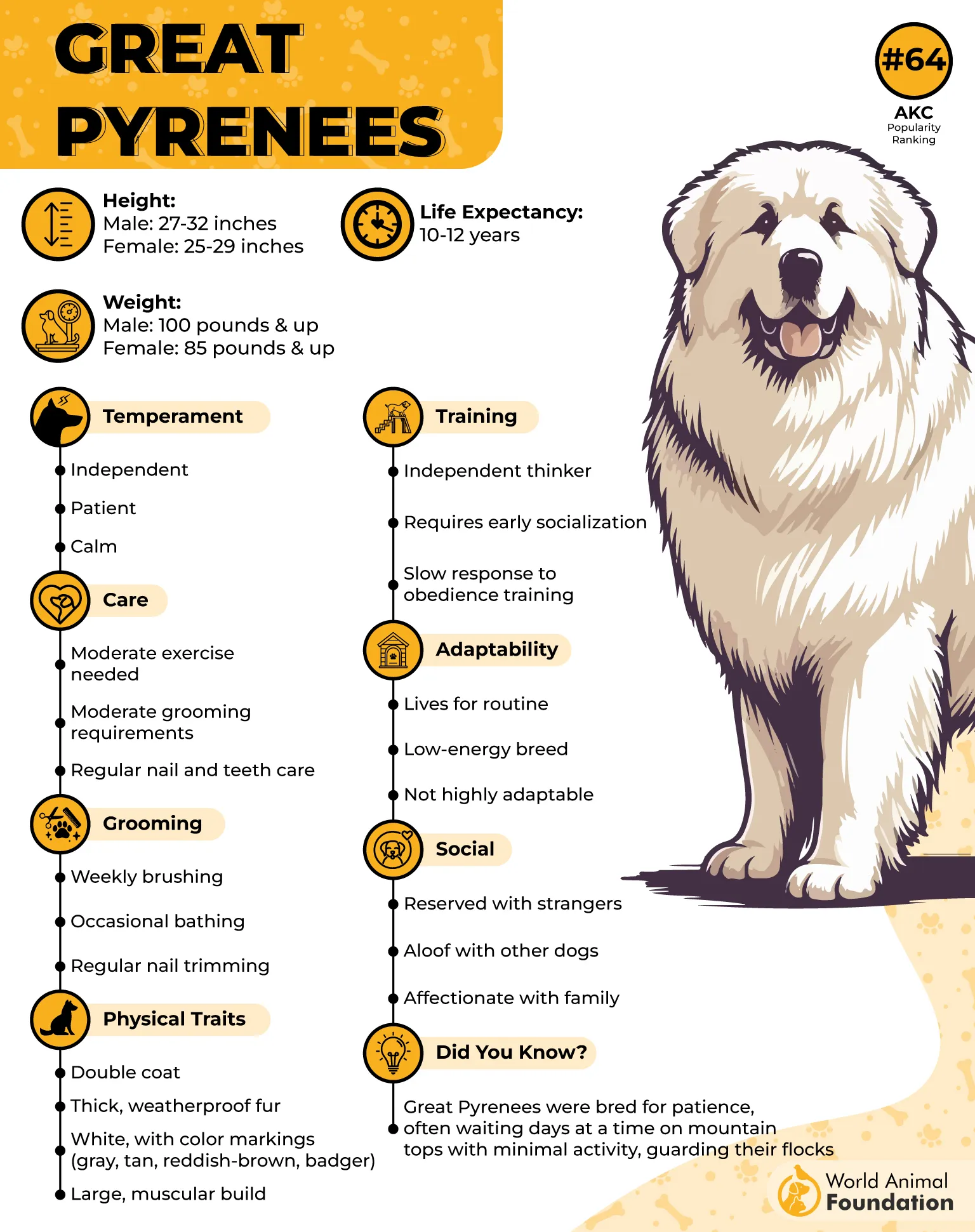
History & Origins
Bred as a guard dog to guard livestock in the Pyrenees Mountains between France and Spain, the Great Pyrenees has a long history as a loyal dog.
They were originally tasked with protecting sheep from wolves and bears. Known for their strength and endurance, this tallest dog breed was also used in World War I to carry contraband across the French-Spanish border.
Grooming & Care
Coat Care: Regular brushing is needed to keep their thick coat healthy, especially during shedding season.
Exercise Needs: Moderate exercise is enough; daily walks or short outdoor play sessions are ideal.
Training: Training can be challenging due to their independent nature, but consistency and patience are key.
Socialization: Early socialization is crucial to managing their guarding instincts and ensuring they are well-adjusted.
Health Considerations: Regular checkups to monitor for common issues like hip dysplasia or entropion (eye condition).
6. Great Dane
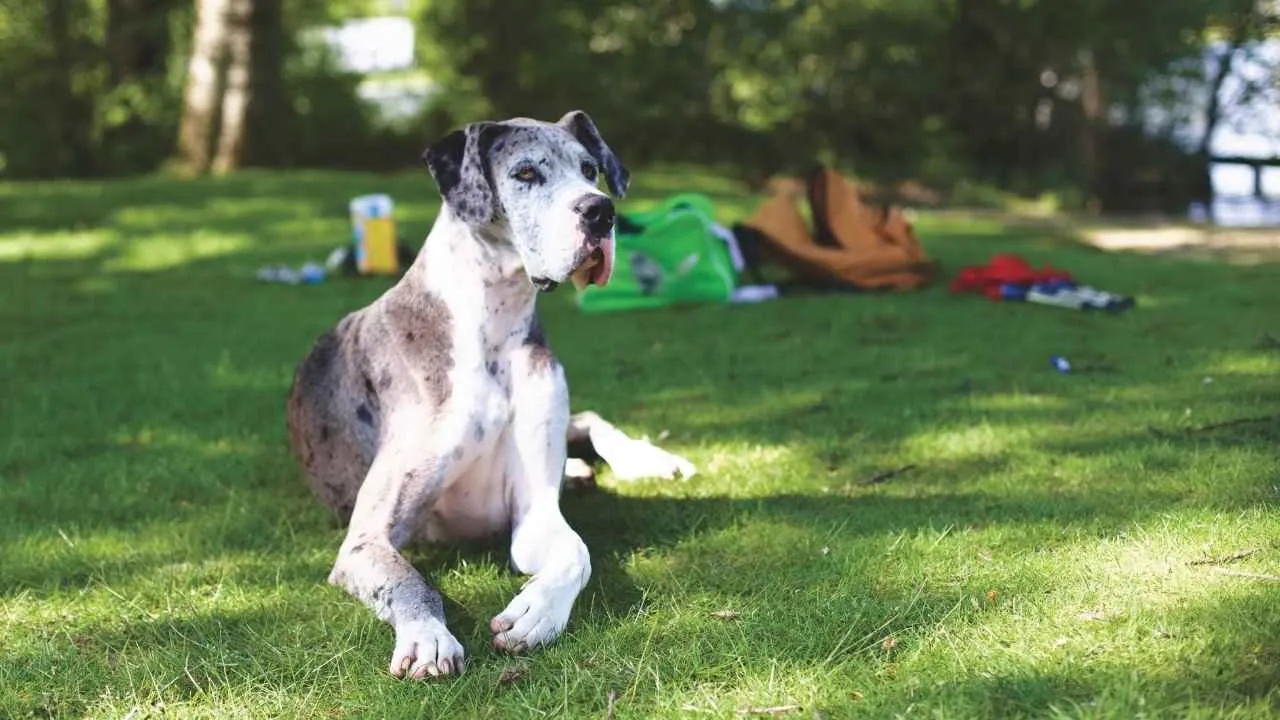
Personality & Features
Despite their imposing size, they are known for their friendly and calm demeanor, making them excellent companions, especially for families with children.
With proper training, they can be well-mannered, affectionate, and social dogs, though their drooling and shedding are things to consider for potential owners.
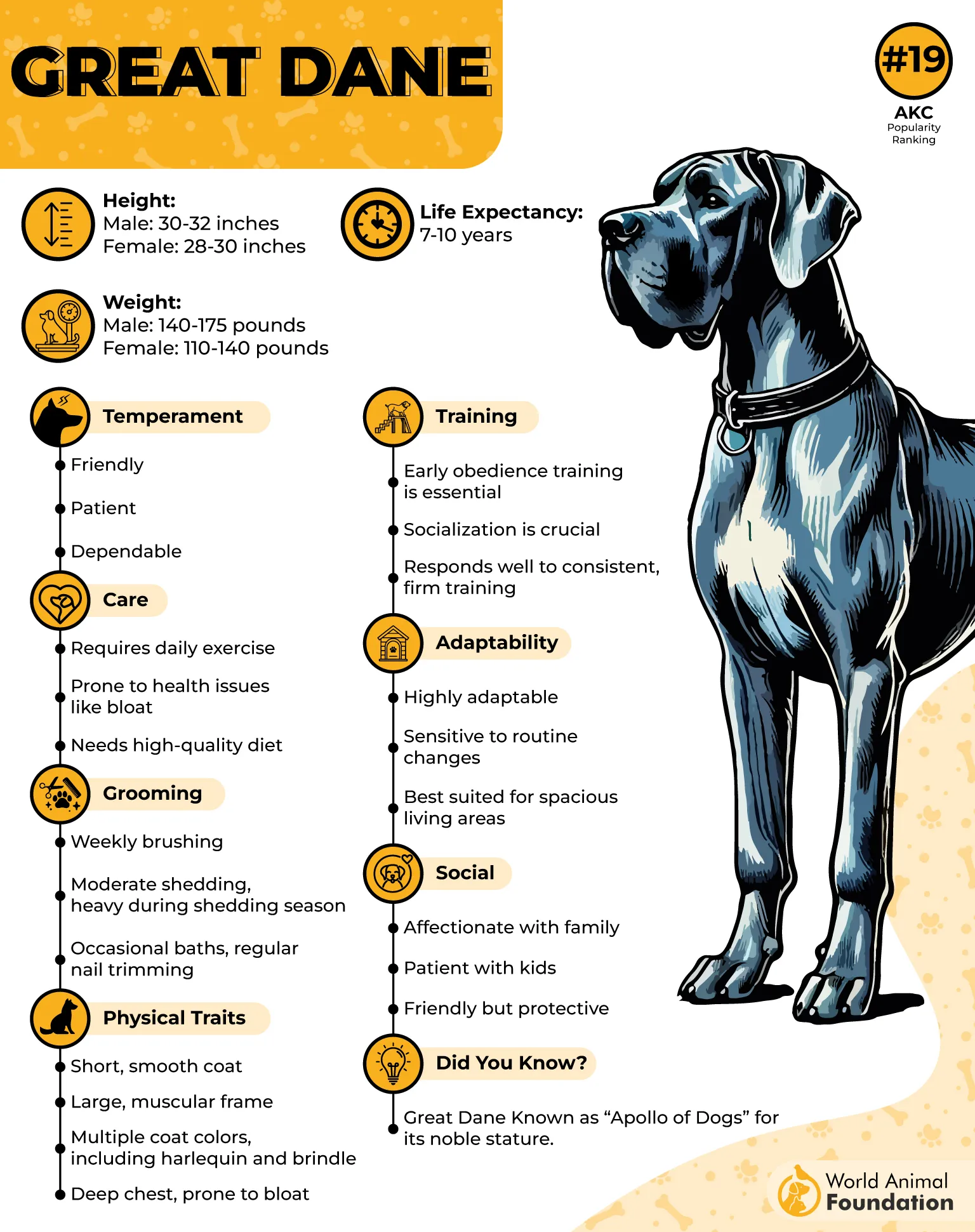
History & Origins
Originally bred in Germany as a hunting dog for wild boars and to serve as estate guards, the Great Dane has a long history of both utility and nobility. Their name, “Deutsche Dog” or “German Dog,” reflects their origins as a regal hunting companion for German nobility, as noted by Purina.
Grooming & Care
Coat Care: Low-maintenance coat; brush once a week or monthly as needed.
Exercise Needs: Requires daily physical and mental stimulation; enjoys walks, runs, and playtime.
Training: Moderately trainable, but they need consistent training due to their large size and energy.
Health Considerations: Regular vet visits to monitor for potential health concerns like hip dysplasia and heart conditions.
Drooling & Shedding: Expect moderate shedding and heavy drooling—keep towels handy for cleanups.
7. Bernese Mountain Dog
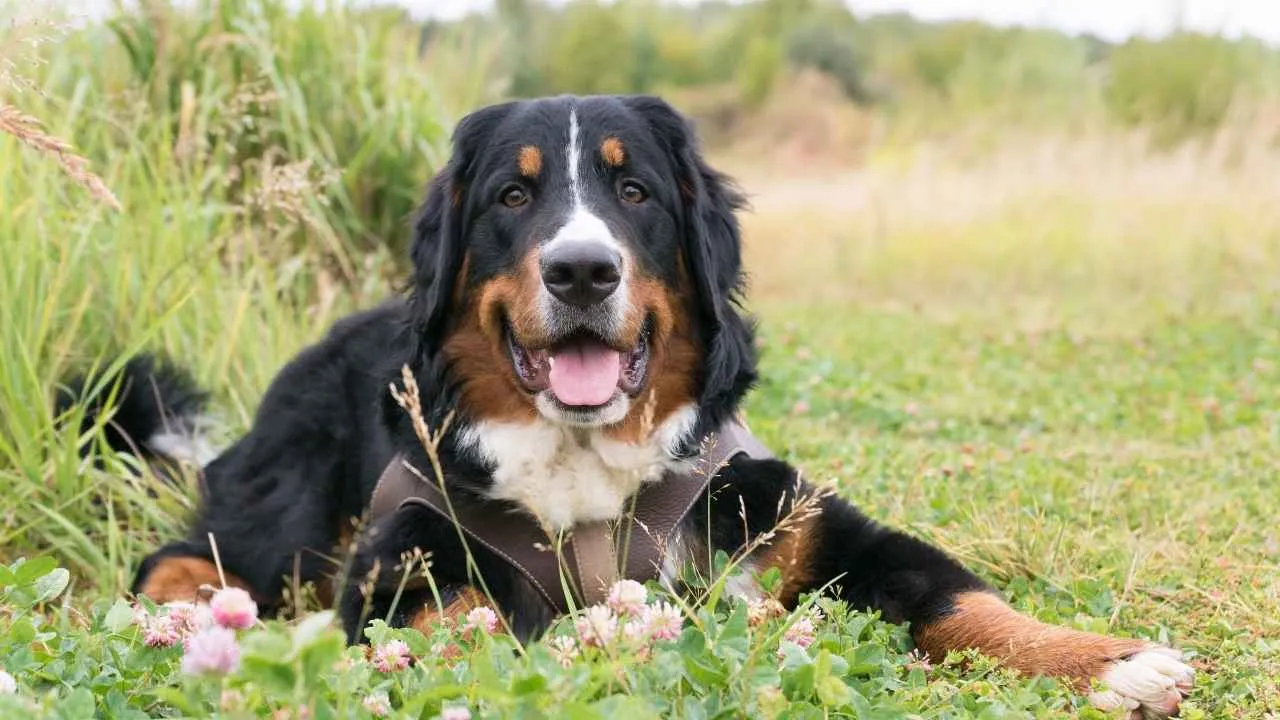
Personality & Size
The Bernese Mountain Dog is a large, affectionate dog breed. Known for their calm demeanor, they are great with children and other pets, offering warmth and loyalty to their families. Though gentle, they are playful and need daily exercise to stay healthy.
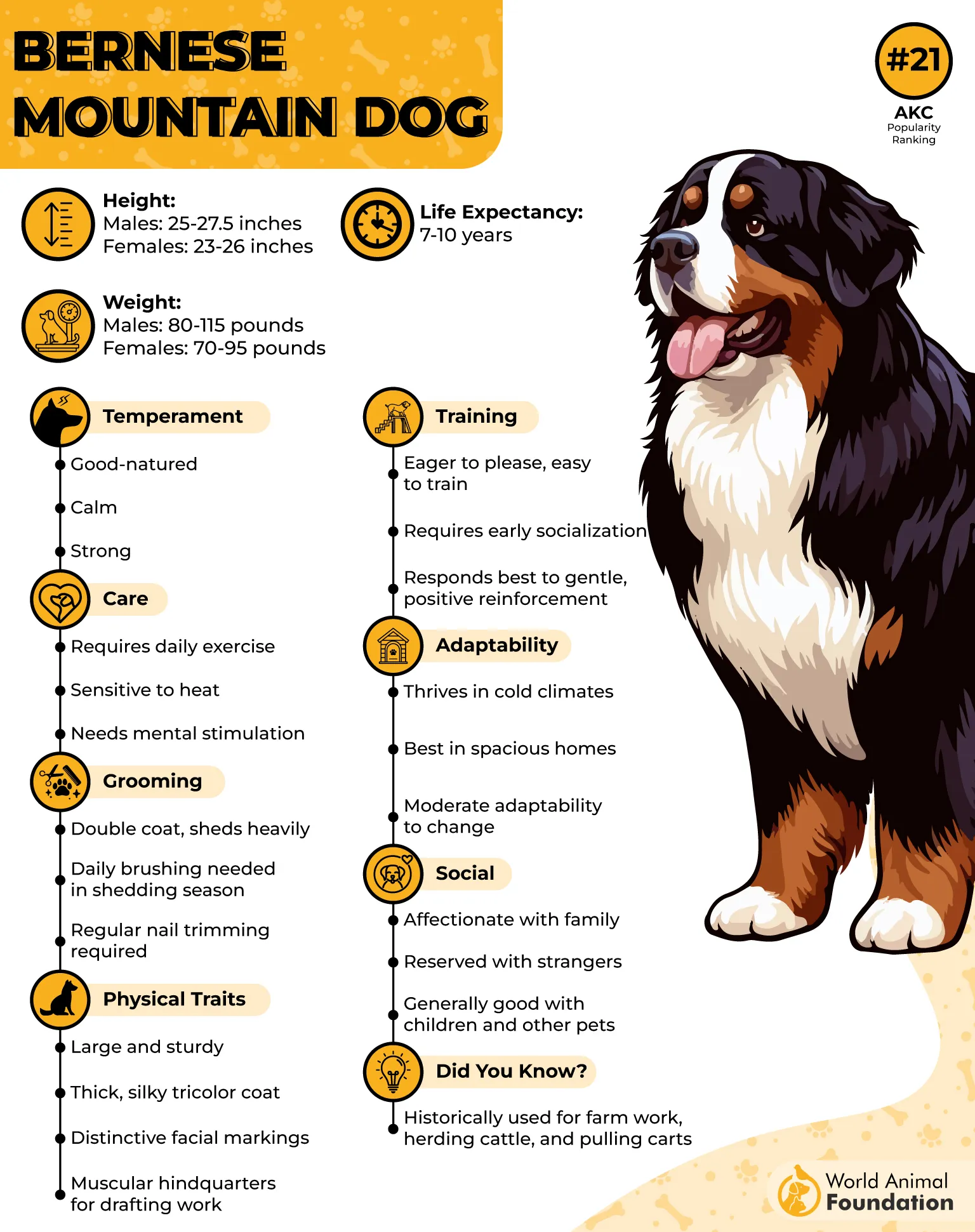
Origins & History
Hailing from Switzerland, the Bernese Mountain Dog was bred as a working farm dog, assisting with herding, pulling carts, and guarding livestock. Introduced to the U.S. in the 1920s, the large breed has since gained popularity as a family companion.
Grooming & Maintenance
Coat Care: Requires frequent grooming due to heavy shedding throughout the year. Brush weekly, and more often during seasonal shedding.
Activity Level: Needs about an hour of exercise daily; enjoys walks, outdoor play, and hikes.
Training: Easy to train with positive reinforcement; they are eager to please, but can be sensitive.
Socialization: Early exposure to different people, pets, and environments helps them grow into well-rounded adults.
Health Monitoring: Regular checkups are essential to detect potential health issues such as hip dysplasia and heart conditions.
Conclusion
The largest dog breeds are truly gentle giants that offer both protection and companionship. Their massive size and protective qualities make them excellent guardians, while their gentle nature ensures they can be wonderful pets for families.
With early training and consistent socialization, these big dogs are typically good with small children and other pets, offering both loyalty and affection in equal measure.
Though their thick double coat requires regular grooming and they need daily exercise, these giant dogs are well worth the effort. Their protective instincts were originally honed to protect livestock or assist in rescue work, which makes them deeply connected to their families.
However, their massive size and health problems can be challenging for pet parents, requiring adequate space and commitment.
With their impressive stature and floppy ears, these large breeds are not only suited to country estates but are also known to protect their loved ones.
Whether they’re guarding, herding, or simply lounging around, they offer unwavering loyalty and a presence that is hard to match, making them the perfect choice for dog lovers with enough room and dedication.


